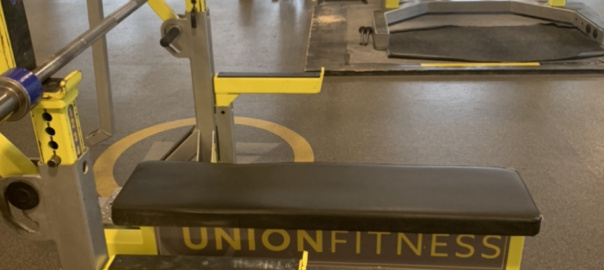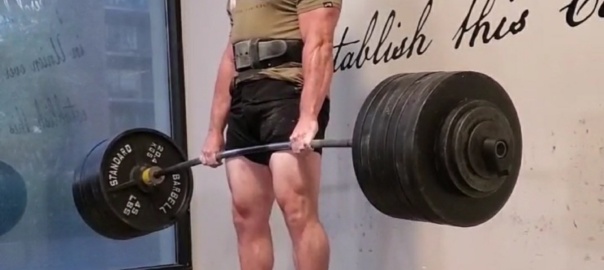I was scrolling instagram on Sunday after my weekend bike ride and I stumbled upon a post about squats from a good friend Lilli. She showed her improvement in squats over a 1 year period. I reached out to tell her congrats. She said it was because of my help. I responded with maybe partially, but it was because of her work. Lilli does not train full time at UF, (even though we are trying to change that) but she is someone that I have helped out when she is here. Today we are going to delve into her squat and how it can help you get into a better squat position.
First thing to think about when squatting is un-racking the bar. Too often people just set the bar on their backs. This process must begin with the feet. A term that has become popular is rooting into the ground. While I am not wild about this term, if it helps you then use it. I would rather say set your feet into the ground. When you are going to un-rack a weight, the foot must be driven into the ground with weight distributed throughout the entire foot. If you can wiggle your toes then you are not driving into the ground. Think about your toes grabbing the ground and your heel being driven down as well. Then you can begin to flex into the bar. This must be an active process. Fill your body with air and engage your lats hard. I consider the lats as important as the glutes. Just like the glutes, the lats are big muscles that run at a 45 degree angle. Glutes and lats are the ultimate stabilizers. Once all of this is set you can begin to un-rack the bar.
Once you have the bar on your back and you are tight, BE PATIENT. Let the body feel the load. Another mistake at this point is dive bombing into a squat. You must allow the body to adapt to being under this load before beginning the squat. Now to the squat. I’ve heard start with your hips, and this is decent advice. The issue is sometimes people can overcomplicate the squat with this advice. I’ll say think there is a rope pulling your butt back and simultaneously pulling your knees forward. After overthinking all of this just remember one thing. KEEP YOUR FOOT FLAT. If your foot remains flat on the ground then 90% of other things will stay in place.
Now that I have covered the lower body, let’s think about what our upper body is doing. Starting with the head, keep it back (do not look up), your head should be driven back into your traps. The easiest way to think about this is push your chin straight back. Now down to our chest, the easiest cue here is keep your sternum up. Keeping your sternum up is always a good thing and will fix many issues without too much thinking. Finally, we come to your mid section. Keep air in your entire body and do not arch your low back. This was one area that I messed up too many times in the past. Keep your hips level to the ground and you should be OK.
This was a very brief explanation on squatting. Now back to our friend Lilli. Notice in her first squat her feet aren’t stable, her hips roll under (butt wink), her head isn’t stable, and I haven’t even addressed the amount of wasted movement at her set up. Before you think I am being overly negative, I am not. Her squat was still better than most people I see squat. Now one year later each of those issues have significantly improved.
Finally, what can you do today improve? First off is lift with intent. Focus on each rep as it is a max attempt. Second, address any mobility issues you may have. Stretch, do yoga, do some dynamic warm ups, just do more. Also, final advice and stay with me, get in better shape. No, your set of ten will not get you in great shape. As the adage goes, fatigue makes cowards of all of us. If your conditioning is not up to par then your technique will break down. So get in better shape.
Here are the two videos of Lilli. Notice the differences one year can make.
Thanks Lilli for allowing me to use your squat and thanks for being you.
Hamer




